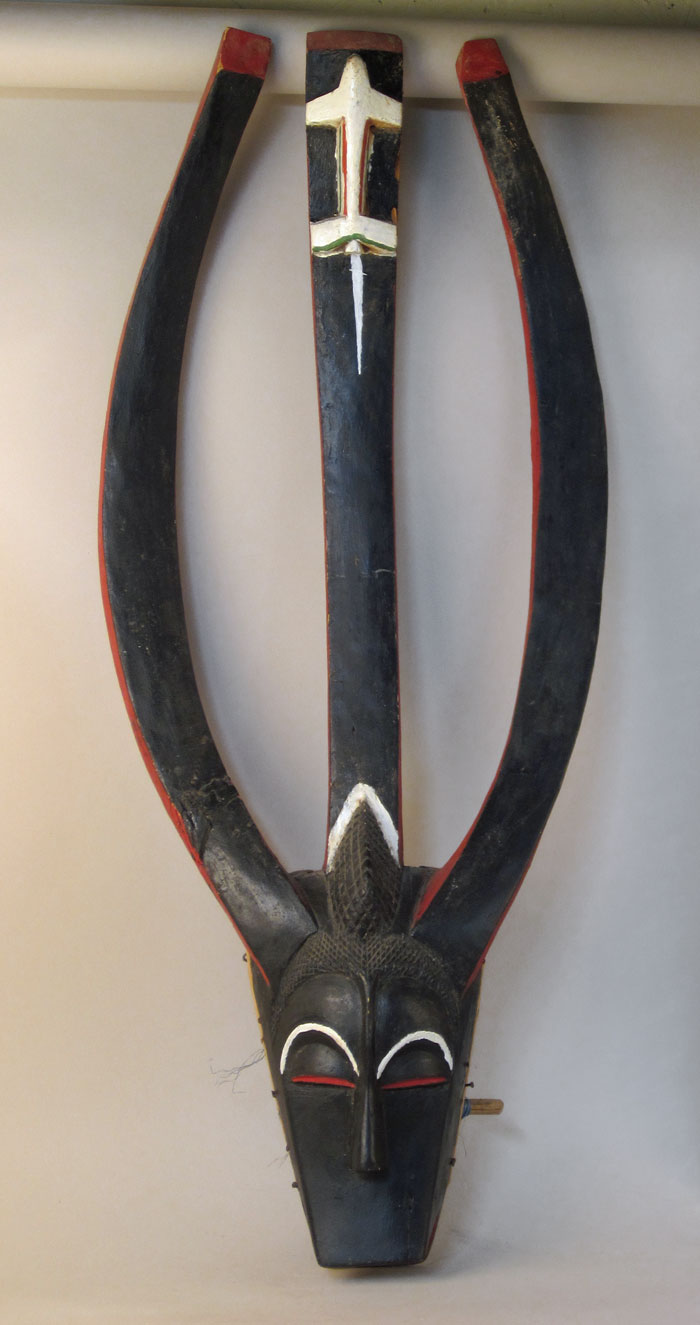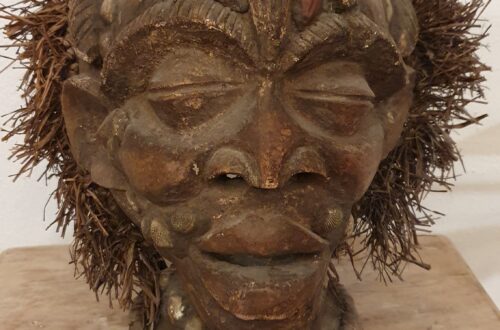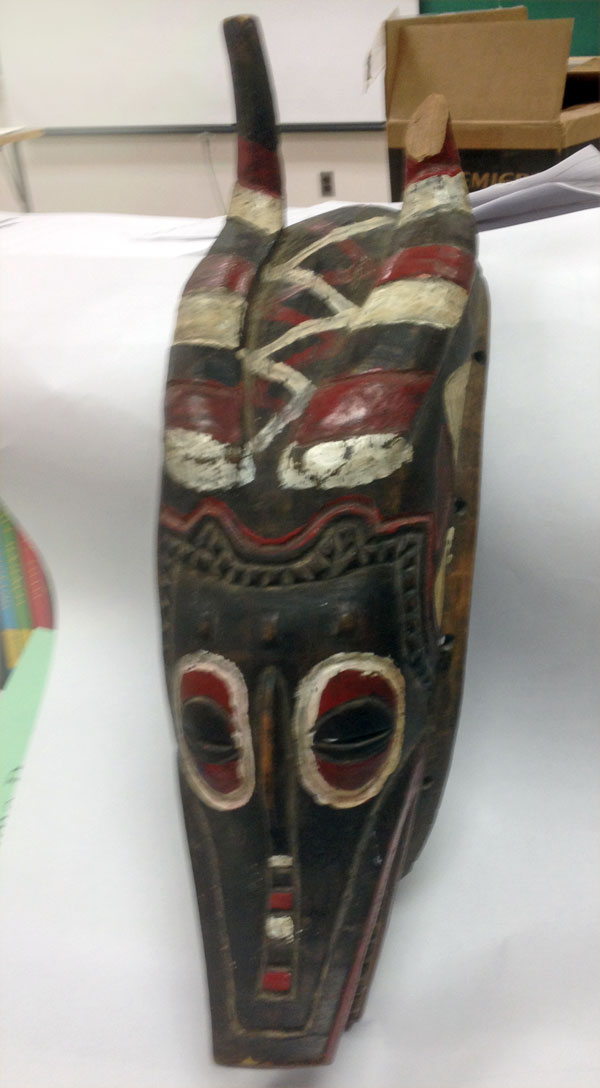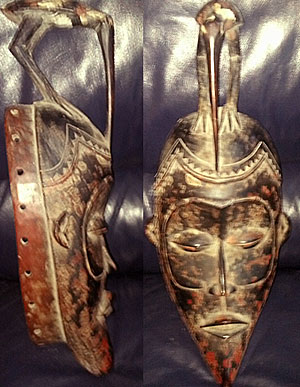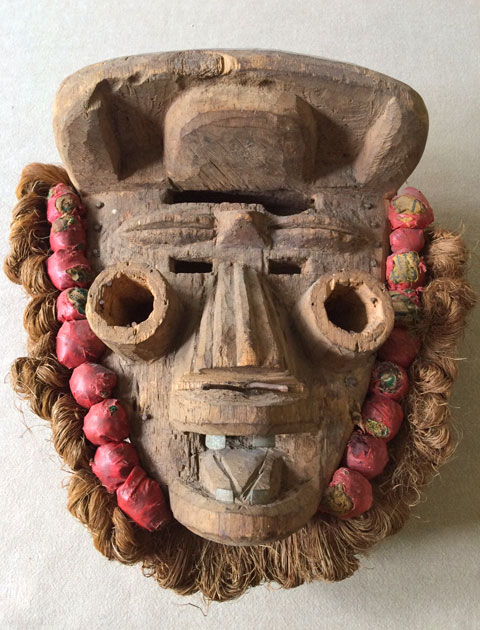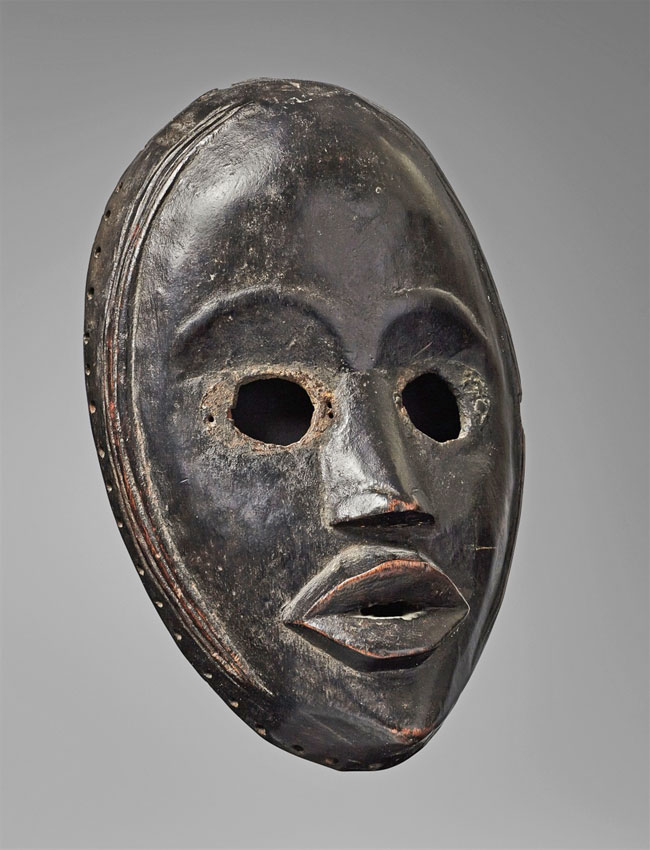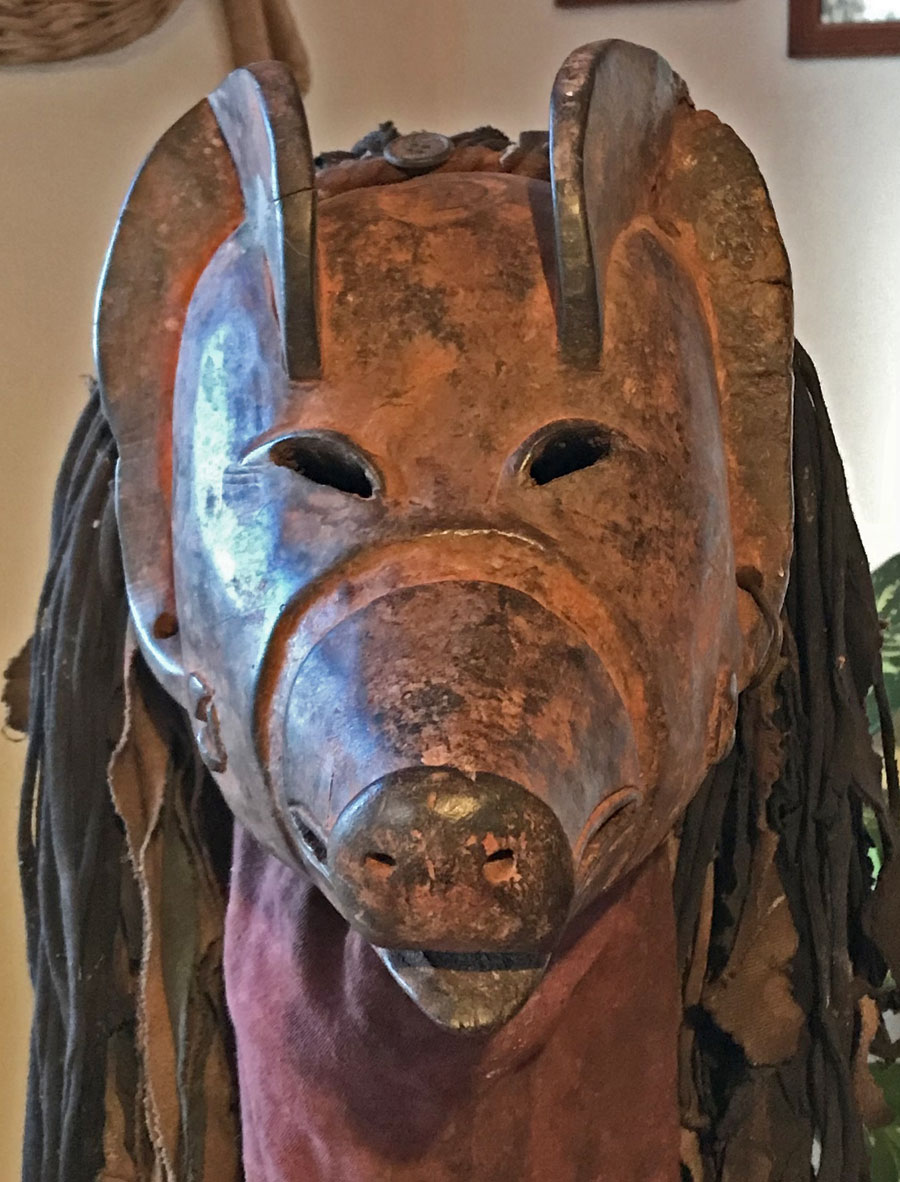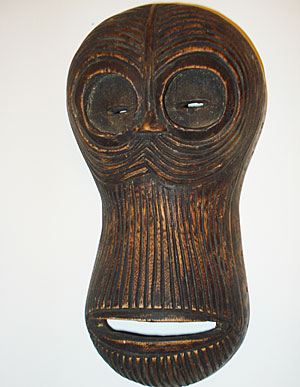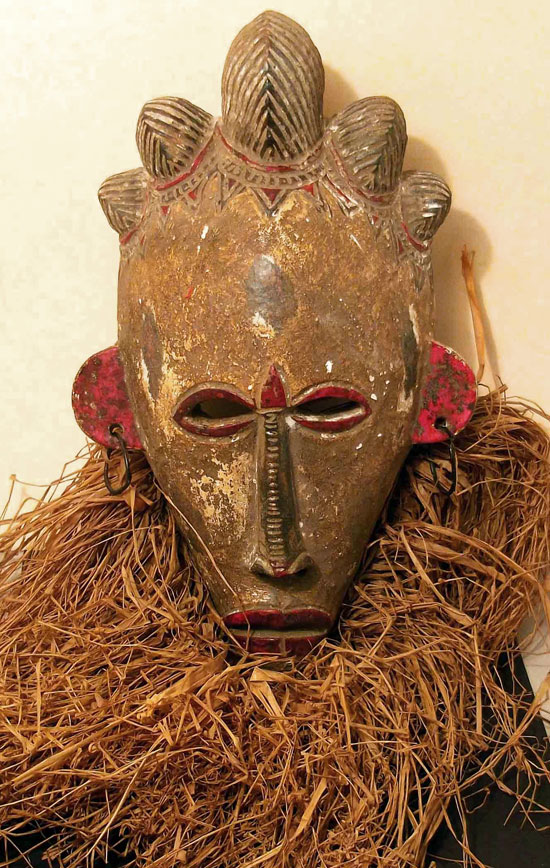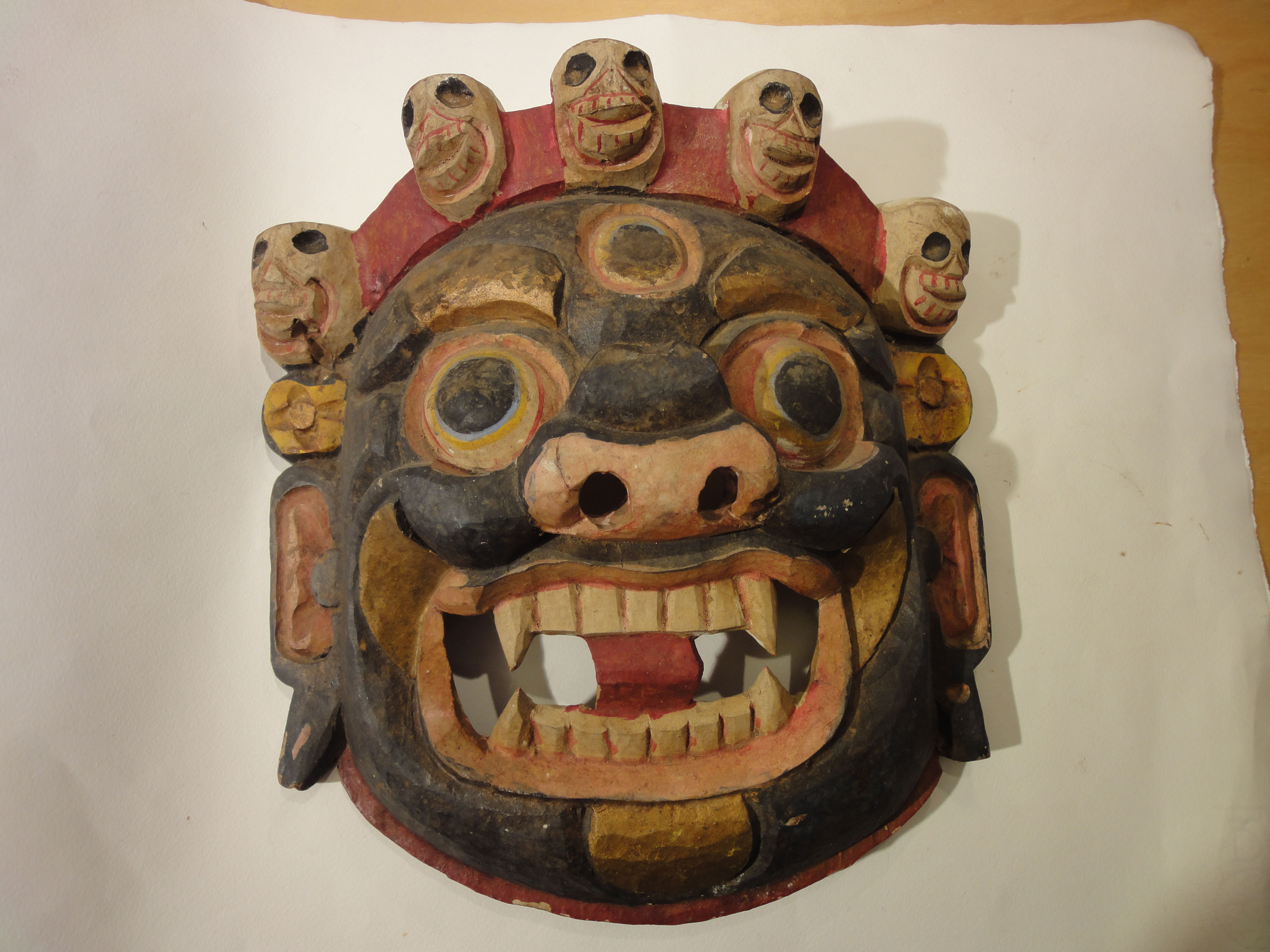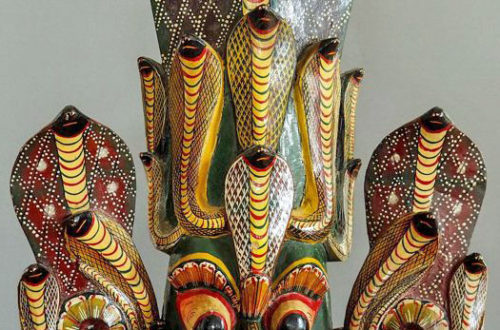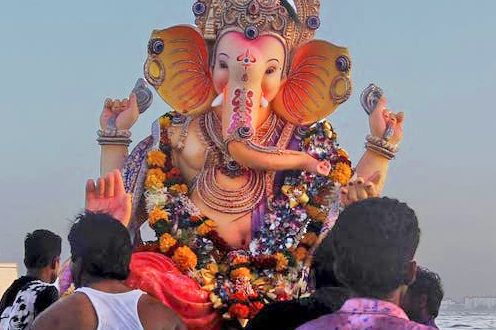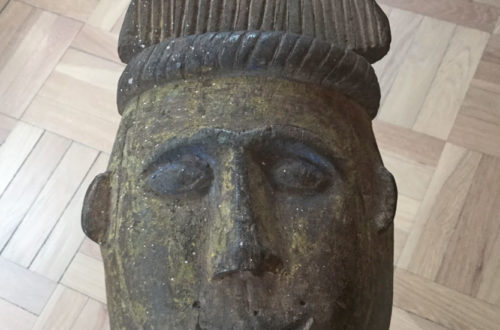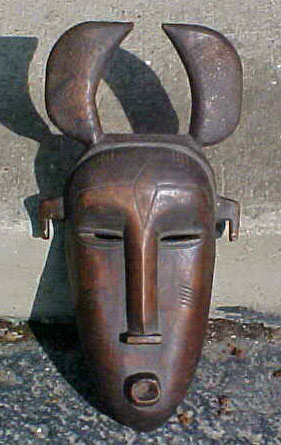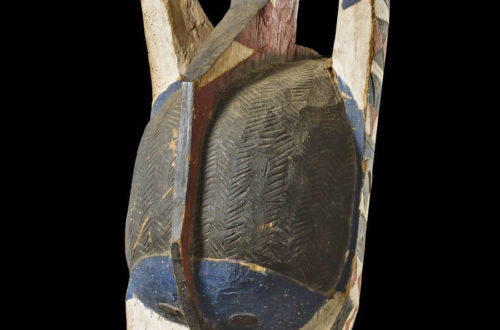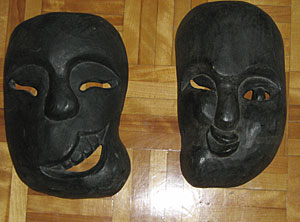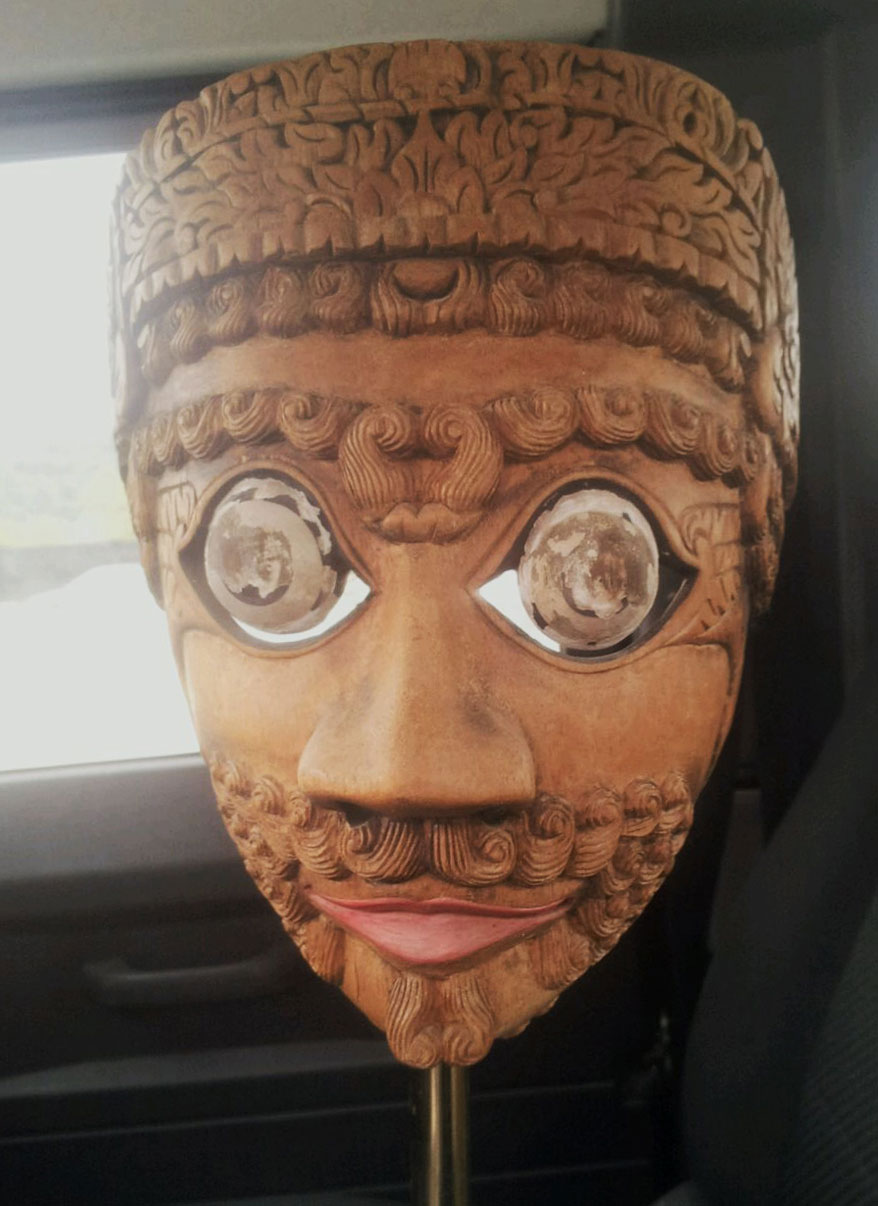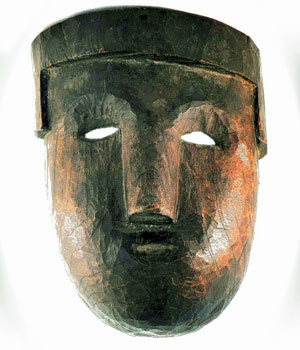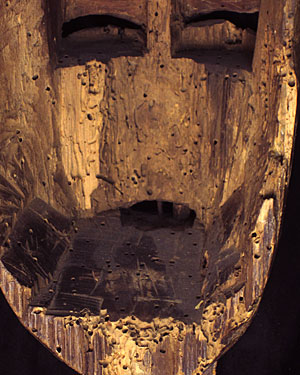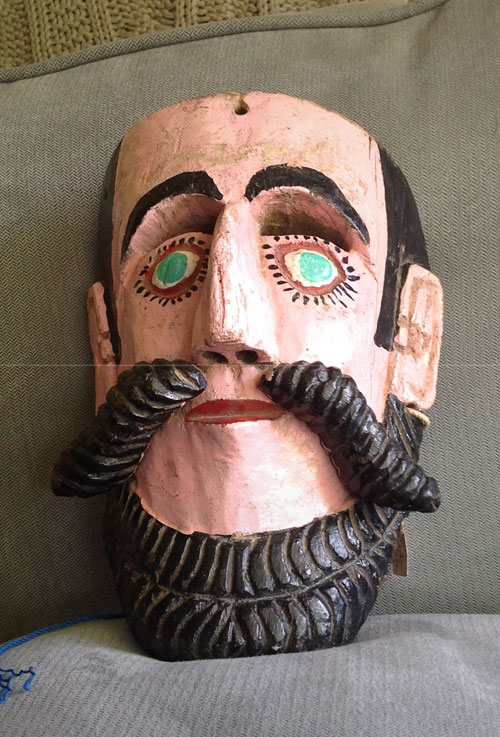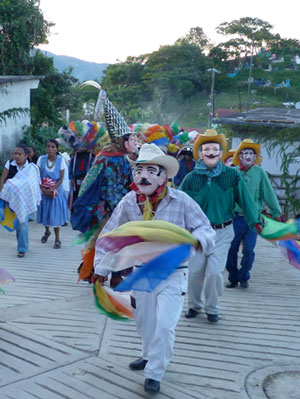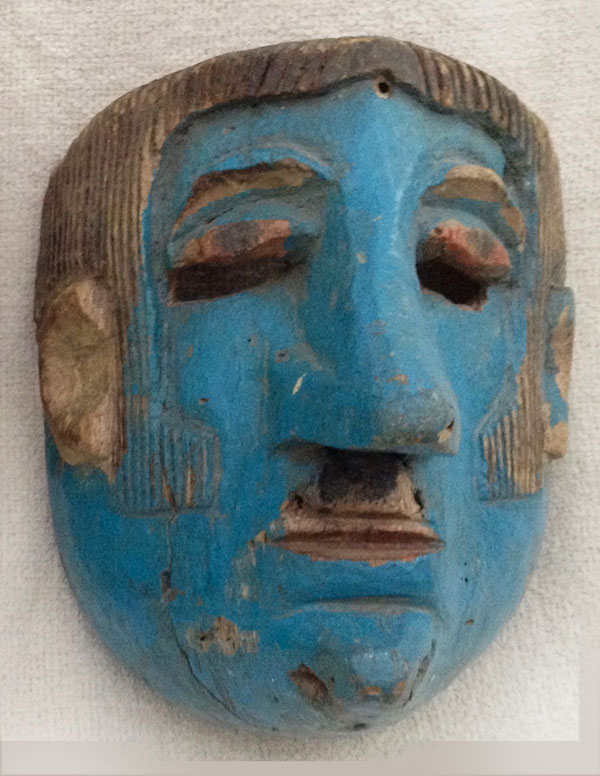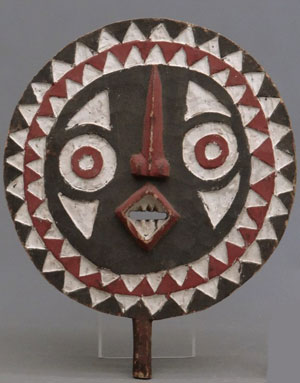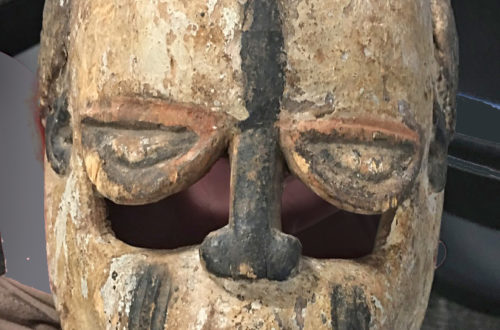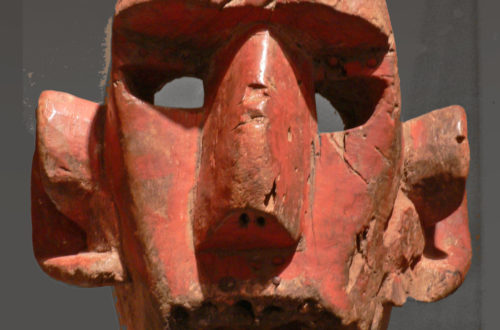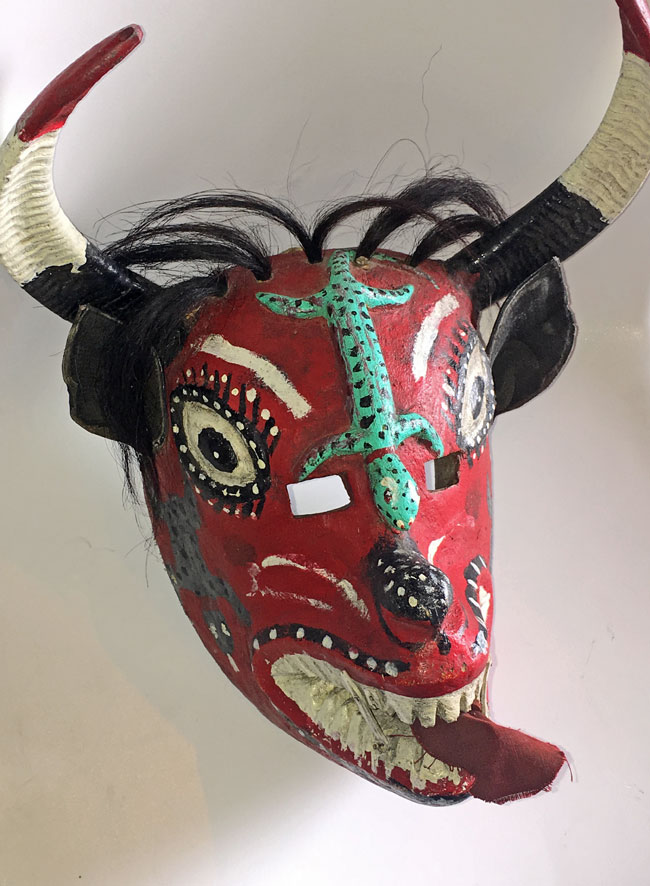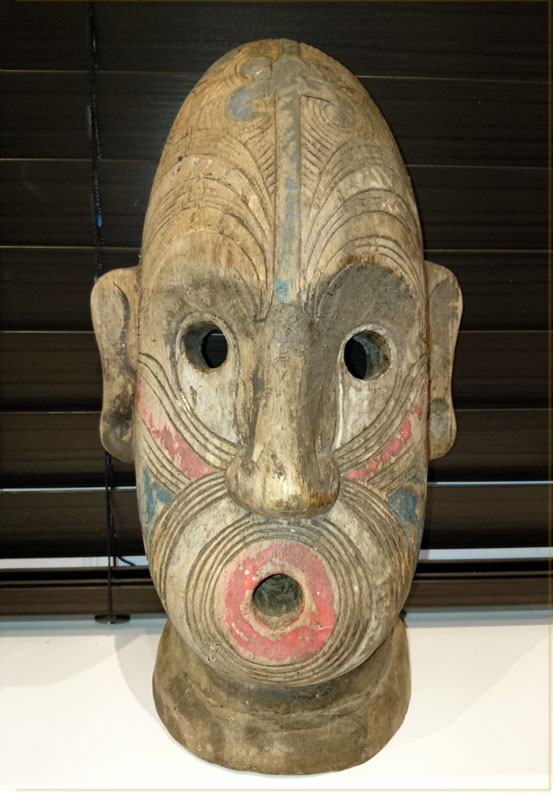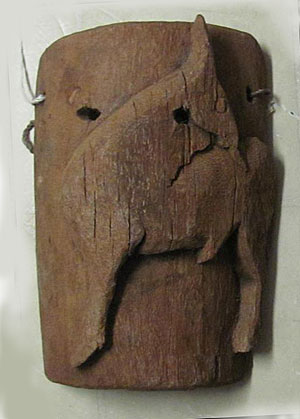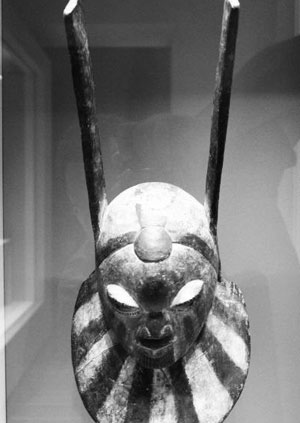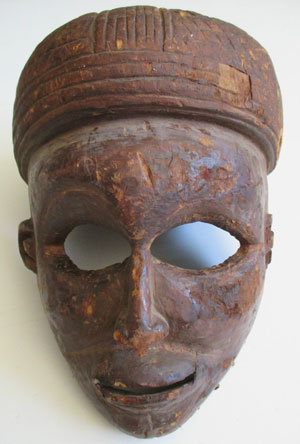Look at this wonderful postman mask from Nigeria. The guy looks like an Indian immigrant, and his cap seems to have the USPS logo on it. Times are changing. Actually, traditional African art has been changing for a long time. Two great books to read: Africa Explores by Susan Vogel and Maske by Phyllis Galembo.
-
-
Tourist junk can be desirable
Q: I found this mask at Goodwill. It is carved from one piece of dark wood. 18″ x 6″. There is red color under the black where it has chipped off. It had a string in back and looks like it was a wall hanger. Rob, 599 A: You have a Guro (a tribe from Ivory Coast, West Africa) tourist mask.
-
Let’s identify this strange mask
Q: Of all the masks I have from the corners of the world, I only have one whose origins are unknown to me. It has these little perforations on the side which I assume is for attaching hay, or feathers, or maybe leaves for decoration. I would love to find out where it came from. A friend bought it for me as a housewarming gift and said the man that sold the mask spoke no English. Marcos, 598 A: This is a fine looking mask, but not something that I can identify.
-
The famous Mahakala mask
Q: Here is a Nepaleese Mask from my collection. Do you know which god is depicted? Thanks a lot, Wim, 597 A: This is Mahakala, or Gonpo, the most often reproduced mask in the Himalayan area.
-
Beautiful mask from the Congo
Q: I bought this mask in Berne, it’s from Gabun. I did a long internet research and didn’t find anything closely resembling. But I found your website, a treasure trove. I’d be happy if you could give me more information about this mask. Thank you! Maja, 596 A: To me this handsome mask combines the characteristics of several cultures located in the central part of the DRC, formerly the Belgian Congo.
-
Meant to be a pair, but from where?
Q: I found these two masks together in a bazaar and first thought they were the classic theatre faces happy/sad. I bought the pair for $7….soon realized they are not the theatre masks, but have no clue where they could be from. There are hole for the eyes, but no side strings to allow for wearing. The wood is light and looks like it was darkened with maybe black shoe polish on the backs as well. Do you have any idea where these masks could come from? Paule, 595 A: I’ve never seen masks like these.
-
Our enemy, the powder post beetle
Q: These are photos of the mask I made of my dog Cadie. Don’t know if you can see the holes on the front. Back of mask, holes a bit more visible. Once I noticed the holes I left the mask in the freezer for 2 weeks then sprayed it with a clear, flat polymer. Mark, 594 A: I’ve posted one of my own Mexican masks where you can see the work of beetles more clearly in a small photo.
-
African traditional art influenced the modernists
Q: I came across another mask and write to inquire about its potential value. It is 24 inches in diameter. Attached are a couple of pictures. Let me know if its worth pursuing or not. In the meantime, stay warm and keep in touch. Charlie, 593 A: I think it is worth pursuing.
-
The Mask Man is stumped again.
Q: I’ve attached some pictures of a mask that I purchased that I can’t identify. It has aspects of African influences as well as Polynesian. I’m most curious about the style of the mouth. It is made from a very light weight wood and looks to have been carved in a manner that it may have been actually danced and not made entirely for the tourist trade. Brian, 592 A: The character on this has mask has both a turtle and a coiled snake on his head.
-
Be careful of this guy
Q: I found this online with no information about were its from and or if its just art or an actual old mask. I hope you can help me out. I’m intrigued by this mask. Best regards. Laurence, 591 A: This looks like a Yoruba style mask from Nigeria, West Africa, but because it is just a black and white, small, low-res photo, it would be unwise to assume more.
